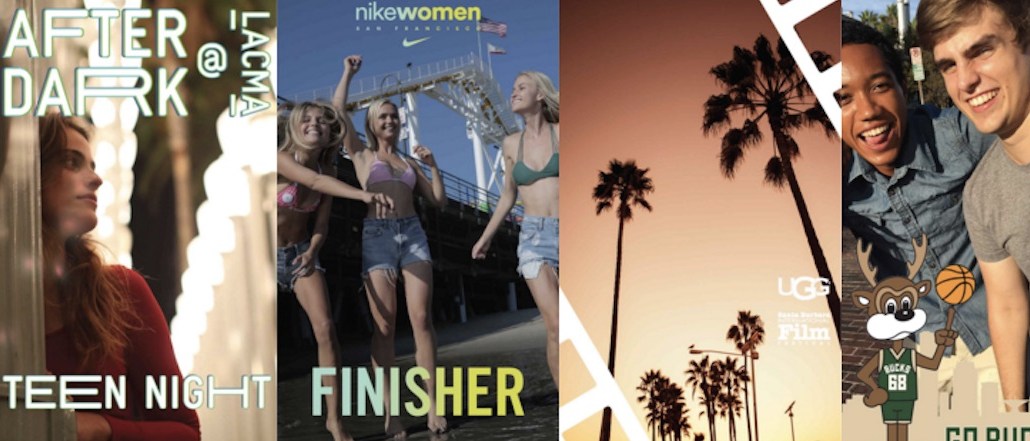Save 50% on a 3-month Digiday+ membership. Ends Dec 5.

With two little words added to its privacy policy — “including ads” — Snapchat appears ready to compete for bigger digital ad budgets.
The messaging and media app updated its policies today, burying them within a major product announcement introducing new video and chat features. The new privacy guidelines outline how Snapchat will be able to use customer data to customize ads going forward.
It’s a potentially key policy change that puts into writing a course that the Los Angeles-based company has been on for months as it builds a better advertising machine. Snapchat added the wording to a clause about how it uses customer information to “personalize the services by, among other things, suggesting friends or profile information, or customizing the content we show you, including ads.”
The older version was the same, without mention of ads. Snapchat declined comment for this article, but the update indicates it will embrace better targeted ads, and it could offer brands the ability to fine-tune messages based on the intended audience.
Snapchat has been building up to such capabilities by hiring top specialists from deep within the ad tech world, including Sriram Krishnan, an executive from rival Facebook who helped build the social network’s ad ecosystem.
Snapchat has been developing ways to better understand users and the types of content they consume. For instance, content from Discover partners, publishers like BuzzFeed, Vice, IGN, Cosmo, can give some direction as to the interests of the reader.
A difficult balance
Advertisers have been asking for more ways to target against basics like age, gender and location, and Snapchat has been expanding such techniques.
Ad position: web_incontent_pos1
“All you can target so far has been geotargeting and age targeting, but age targeting only started this year in a main way,” said Jeanne Bright, vp of social at DigitasLBi. “So if they would allow us to do better targeting, then that would increase their parity with other networks.”
Snapchat has always been at a disadvantage in ad technology because it has not been known to hoard data on every user’s every tap inside the app. CEO Evan Spiegel has expressed an aversion to advertising that comes off as too creepy, and Snapchat users expect some anonymity in an app that disappears their content.
However, in today’s announcement, Snapchat also posted a page outlining its services and addressed the potential for better targeted ads. “We don’t want to serve ads that are so custom-tailored that they feel invasive or uncomfortable. It’s a difficult balance and we may not always get it right, so we are counting on Snapchatters for feedback,” the company said.
Still, to compete in digital advertising against the likes of Google and Facebook, Snapchat has had to embrace much of the same technology that powers their ads. Advertisers demand automated, targeted ad serving to tens of millions of users at a time, and trusty reporting on their campaigns.
In October, the last time Snapchat updated its privacy policies, it did include changes to how it collects data, the type of data, and how that data could be used. That privacy update did not include ads in the types of content that could be customized to user tastes.
Ad position: web_incontent_pos2
In the new privacy policy, Snapchat did tweak other clauses that could speak to broader ambitions, as well. It updated policies on the types of data it can access from people’s devices, and what it tracks from users inside the app, and outside.
Discover publishers also have been interested in using the knowledge they have on readers to shape how they produce for Snapchat. For instance, some publishers have said they would like to recommend new stories and videos to readers, or show them fresh content after a reader has already gone through their channels’ offerings.
Sticker shock
Today’s policy changes were accompanied by a product overhaul in which Snapchat introduced new video and chat features. It also launched sticker integrations that liven up the messaging side of the app.
Advertisers think stickers could be another avenue for their marketing on Snapchat, especially after the company bought Bitmoji last week. Bitmoji is a top virtual sticker app that lets people create cartoonish avatars, and it could easily slip into Snapchat’s new sticker library.
“What’s missing from the app today is an easy way for a user to insert a representation of themselves into their non-selfie snaps and stories. Bitmoji could provide that, in a customizable and sponsorable way. For example, I could add my bitmoji to a snap wearing Nikes, Ray-Bans or a Game of Thrones outfit,” said Jennifer Lum, co-founder of Adelphic, a mobile ad tech company.
That could put branded content right into the most trafficked — and most sacred — area within Snapchat, the messaging side of the app.
More in Media

What publishers are wishing for this holiday season: End AI scraping and determine AI-powered audience value
Publishers want a fair, structured, regulated AI environment and they also want to define what the next decade of audience metrics looks like.

Digiday+ Research Subscription Index 2025: Subscription strategies from Bloomberg, The New York Times, Vox and others
Digiday’s third annual Subscription Index examines and measures publishers’ subscription strategies to identify common approaches and key tactics among Bloomberg, The New York Times, Vox and others.

From lawsuits to lobbying: How publishers are fighting AI
We may be closing out 2025, but publishers aren’t retreating from the battle of AI search — some are escalating it, and they expect the fight to stretch deep into 2026.
Ad position: web_bfu
